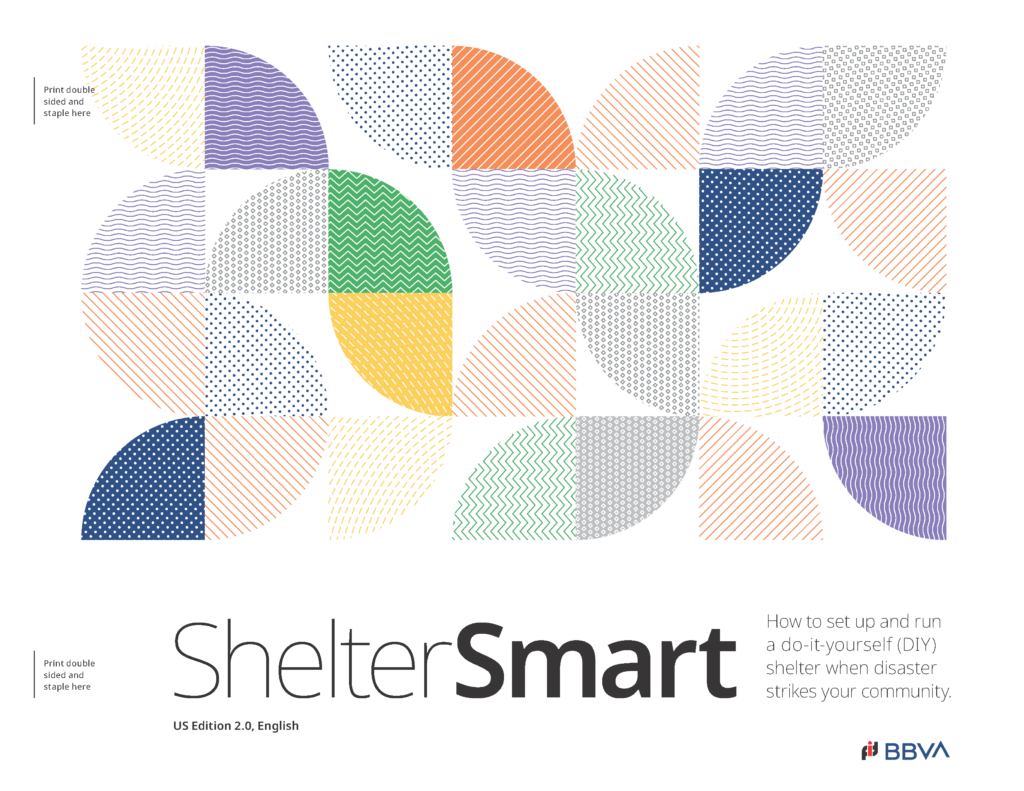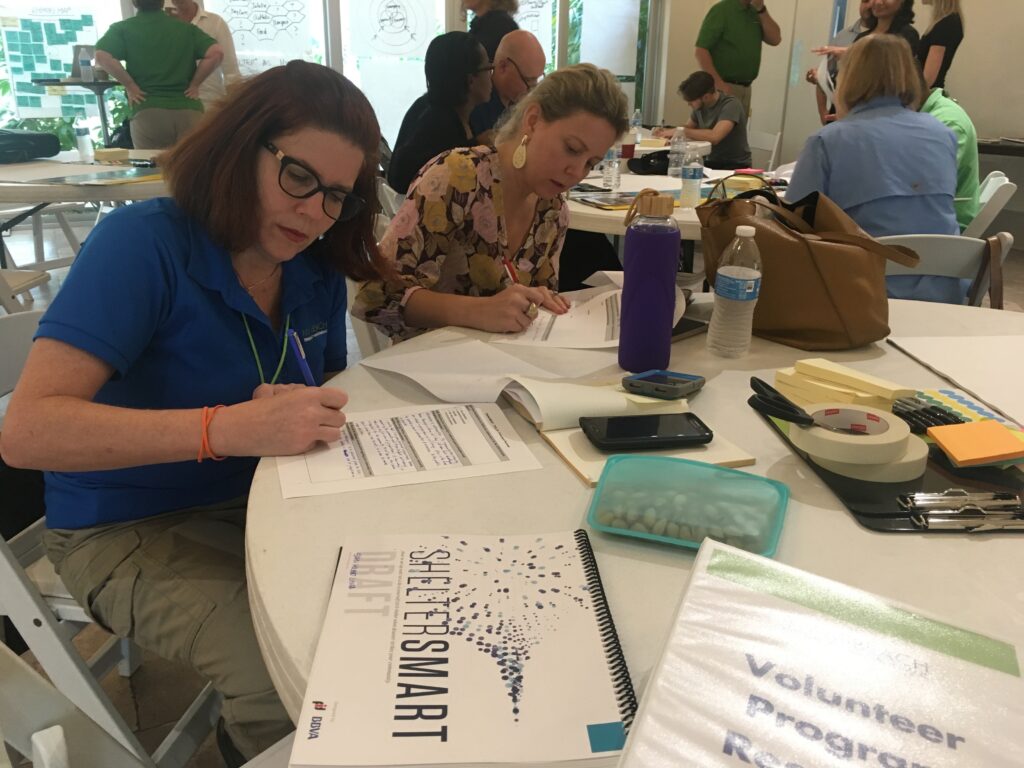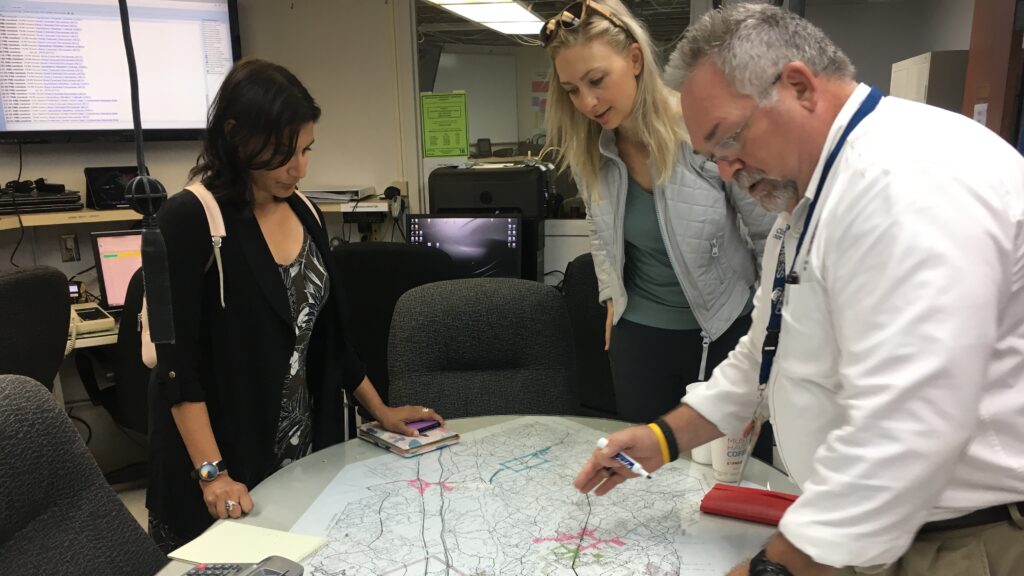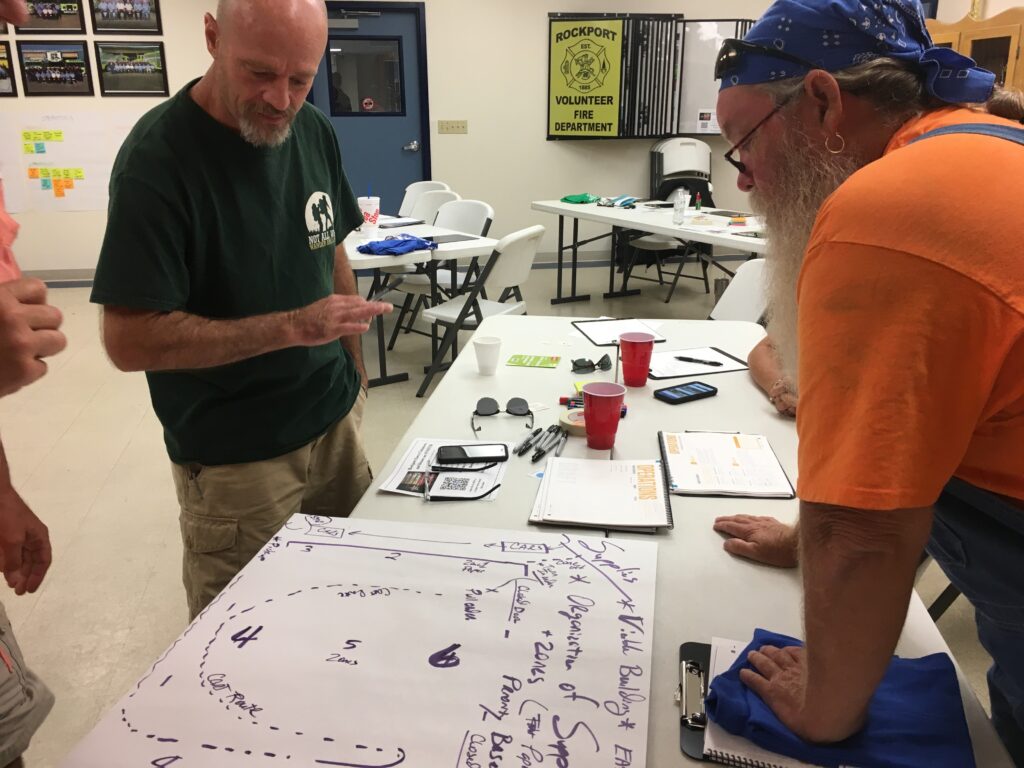How to set up and run a do-it-yourself (DIY) shelter when disaster strikes your community

Basic information about the guide.
Preparedness is the best defense!
Organizing a shelter in real time.
In late 2017, within a short span of time, three major hurricanes struck the Gulf of Mexico, two earthquakes hit Mexico, and California and Spain both saw devastating wildfires. These events impacted millions of people and challenged communities, businesses, and governments around the world. In response, designers from BBVA partnered with FIT to see what we could do to help.
The approach relies on research to understand needs and frame the problem-to-be-solved. It blends a discovery-based process of “build and learn” with a flexible, collaborative, and creative set of tools. A design mindset is strategically focused on discovery, action, and continuous improvement.
Our first step was to better understand the needs of those impacted by disaster. We observed that in the days immediately following a disaster, there was often a gap between community need and government ability to provide aid quickly. Communities needed a way to prepare and respond locally, without reinventing the wheel.
We brought together a small interdisciplinary team of disaster responders and designers to brainstorm and quickly prototype potential solutions. A collaborative process helped the team align their thinking and get a better sense of how the solution would work in real life. Two days of workshopping produced several concepts, including what eventually became ShelterSmart.
The first draft of ShelterSmart was piloted with communities in Alabama, Texas, and Florida. As small teams of regular people interacted with the guide, we observed things that worked well and areas for improvement. The team went back to the drawing board and reimagined the guide as what you see today.


